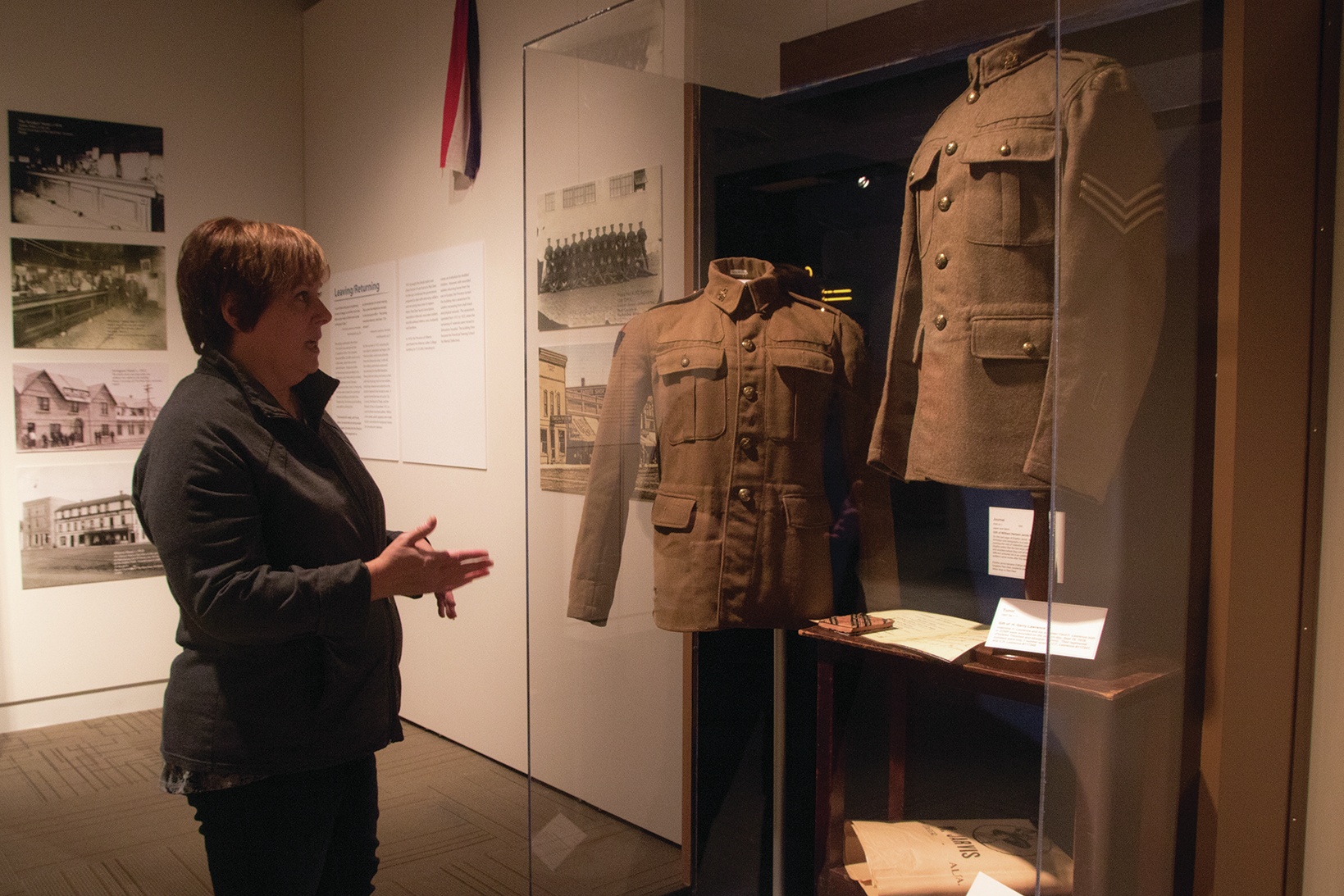Remembrance Day is not only a time to pay tribute to veterans of any war or conflict past or present, but also to consider how the local community was impacted by such times in history.
The Red Deer Museum + Art Gallery is currently showcasing an exhibit called ‘The King Will Take Off His Hat to the Canadians’ which runs through to Feb. 7th. It’s the second of what will ultimately be a four-part exhibition that tells the stories of Central Albertans from the First World War.
The actual title – ‘The King Will Take Off His Hat to the Canadians’ – comes from the diary of a local soldier C.B. Whyte, which he recorded on May 2nd, 1915.
The comment was made by someone Whyte had been talking with about the Second Battle of Ypres. This year marks the 100th anniversary of the Second Battle of Ypres, and also the writing of In Flanders Fields by Canadian physician Lieut. Col. John McCrae who was originally from Guelph, Ontario.
As Val Miller, curator of collections for the the Museum pointed out, Cecil Whyte’s diaries – which contain the quote – are in the local archives. He was killed in 1918. He and his two brothers went to war, but only one returned – Reg, who eventually opened Whyte Motors in Red Deer some time later.
“In the diary post, Cecil is talking about the Second Battle of Ypres and the loss of Canadians,” said Miller, adding that Canadian soldiers showed significant courage in helping to fend off the enemy during the battle.
“He writes that one British soldier said to him, ‘The King would take off his hat to the Canadians’.
“What happens was that was the first time the Germans used gas on the western front,” she said. “Everybody else flees, but the Canadians hold the ground. There’s all sorts of debate as to why and what happened, but regardless, they did.”
According to Veterans Affairs Canada, “Following an intensive artillery bombardment, (the Germans) released 160 tons of chlorine gas from cylinders dug into the forward edge of their trenches into a light northeast wind.
“As thick clouds of yellow-green chlorine drifted over their trenches the French defences crumbled, and the troops, completely bemused by this terrible weapon, died or broke and fled, leaving a gaping 6.5 kilometre hole in the Allied line.
“German troops pressed forward, threatening to sweep behind the Canadian trenches and put 50,000 Canadian and British troops in deadly jeopardy.”
As Miller explained, all through the night the Canadian troops fought to close the gap.
In addition they mounted a counter-attack to drive the enemy out of Kitcheners’ Wood, an oak plantation near St. Julien.
In the morning two more attacks were made against enemy positions. Little ground was gained and casualties were extremely heavy, but these attacks bought some precious time to close the flank, notes the web site.
The battle of St. Julien lay ahead.
“Another violent bombardment was followed by another gas attack in the same pattern as before. This time the target was the Canadian line. Here, through terrible fighting, withered with shrapnel and machine-gun fire, hampered by their issued Ross rifles which jammed, violently sick and gasping for air through soaked and muddy handkerchiefs, they held on until reinforcements arrived.
“Thus, in their first major appearance on a European battlefield, the Canadians established a reputation as a formidable fighting force.”
And thus the striking quote in Cecil’s diary, which in its entirety reads, “After church parade, came back to the hut and read Lloyd’s ‘Weekly’ which gave us the Canadian Casualty list of the week. It was awful – 6,000 Canadians put out of the fight in one engagement. But they saved the whole line of allies and this victory will go down in history. We have a great reputation to uphold! As one English soldier said to me, The King will take off his hat to the Canadians.”
The Museum exhibit also features an array of mementos, photos and artifacts of local folks who were in some way impacted by the First World War as well. As a person studies what is on display and reads the accompanying material, it becomes clearer about how the hardships of that time reached Red Deer.
As Miller pointed out, it’s a tremendous means of learning more about how Red Deer was affected by a war being fought in what would have seemed a world away.
“This is all from the Museum’s collection, and is also all connected to people in Red Deer who have experience of going to the First World War.”
As for In Flanders Fields, according to the web site Historica Canada, McCrae had enlisted in the First Canadian Contingent soon after the beginning of World War I in 1914.
McCrae was inspired to write the legendary poem on May 3rd, 1915, after presiding over the funeral of friend and fellow soldier Alexis Helmer, who died in the Second Battle of Ypres. He was posted as a medical officer to one of the artillery batteries fighting at Ypres in April 1915. He published other poems before the war in McGill University’s University Magazine. In Flanders Fields is one of a collection of poems published after his death in 1919 as In Flanders Fields and Other Poems.
Meanwhile, the galleries at the Museum are open Remembrance Day from noon to 4:30 p.m.
Admission is free – donations are welcome.
editor@reddeerexpress.com



